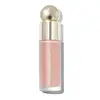What's inside
What's inside
 Key Ingredients
Key Ingredients

 Benefits
Benefits

 Concerns
Concerns

 Ingredients Side-by-side
Ingredients Side-by-side

Isododecane
EmollientSilica
AbrasiveDimethicone
EmollientMethyl Trimethicone
Skin ConditioningDiisostearyl Malate
EmollientTrimethylsiloxysilicate
EmollientDiphenyl Dimethicone
EmollientMica
Cosmetic ColorantCera Microcristallina
Emulsion StabilisingSilica Silylate
EmollientDisteardimonium Hectorite
StabilisingC30-45 Alkyl Dimethicone
Skin ConditioningDimethicone/Vinyl Dimethicone Crosspolymer
Skin ConditioningSorbitan Isostearate
EmulsifyingPropylene Carbonate
SolventPhenoxyethanol
PreservativeCaprylyl Glycol
Emollient1,2-Hexanediol
Skin ConditioningPropanediol
SolventHelianthus Annuus Seed Oil
EmollientIllicium Verum Fruit Extract
PerfumingGardenia Florida Fruit Extract
Skin ConditioningNelumbo Nucifera Flower Extract
Skin ConditioningNymphaea Odorata Root Extract
RefreshingCI 77891
Cosmetic ColorantCI 45410
Cosmetic ColorantCI 15985
Cosmetic ColorantCI 77491
Cosmetic ColorantCI 77499
Cosmetic ColorantCI 15850
Cosmetic ColorantIsododecane, Silica, Dimethicone, Methyl Trimethicone, Diisostearyl Malate, Trimethylsiloxysilicate, Diphenyl Dimethicone, Mica, Cera Microcristallina, Silica Silylate, Disteardimonium Hectorite, C30-45 Alkyl Dimethicone, Dimethicone/Vinyl Dimethicone Crosspolymer, Sorbitan Isostearate, Propylene Carbonate, Phenoxyethanol, Caprylyl Glycol, 1,2-Hexanediol, Propanediol, Helianthus Annuus Seed Oil, Illicium Verum Fruit Extract, Gardenia Florida Fruit Extract, Nelumbo Nucifera Flower Extract, Nymphaea Odorata Root Extract, CI 77891, CI 45410, CI 15985, CI 77491, CI 77499, CI 15850
Butylene Glycol Dicaprylate/Dicaprate
EmollientDimethicone
EmollientIsotridecyl Isononanoate
EmollientPolyglyceryl-2 Triisostearate
EmulsifyingPolymethylsilsesquioxane
Mica
Cosmetic ColorantSynthetic Fluorphlogopite
Silica
AbrasiveParaffin
PerfumingCalcium Aluminum Borosilicate
Polyethylene
AbrasiveMicrocrystalline Wax
Emulsion StabilisingDiisostearyl Malate
EmollientEuphorbia Cerifera Cera
AstringentSorbitan Sesquioleate
EmulsifyingTocopheryl Acetate
AntioxidantCaprylic/Capric Glycerides
Emollient1,2-Hexanediol
Skin ConditioningTin Oxide
AbrasiveCI 77891
Cosmetic ColorantIron Oxides
CI 77491
Cosmetic ColorantCI 77492
Cosmetic ColorantCI 77499
Cosmetic ColorantCI 19140
Cosmetic ColorantCI 15850
Cosmetic ColorantButylene Glycol Dicaprylate/Dicaprate, Dimethicone, Isotridecyl Isononanoate, Polyglyceryl-2 Triisostearate, Polymethylsilsesquioxane, Mica, Synthetic Fluorphlogopite, Silica, Paraffin, Calcium Aluminum Borosilicate, Polyethylene, Microcrystalline Wax, Diisostearyl Malate, Euphorbia Cerifera Cera, Sorbitan Sesquioleate, Tocopheryl Acetate, Caprylic/Capric Glycerides, 1,2-Hexanediol, Tin Oxide, CI 77891, Iron Oxides, CI 77491, CI 77492, CI 77499, CI 19140, CI 15850
 Reviews
Reviews

Ingredients Explained
These ingredients are found in both products.
Ingredients higher up in an ingredient list are typically present in a larger amount.
1,2-Hexanediol is a synthetic liquid and another multi-functional powerhouse.
It is a:
- Humectant, drawing moisture into the skin
- Emollient, helping to soften skin
- Solvent, dispersing and stabilizing formulas
- Preservative booster, enhancing the antimicrobial activity of other preservatives
Ci 15850 is the pigment color red. It is an azo dye and created synthetically.
Azo dyes need to be thoroughly purified before use. This allows them to be more stable and longer-lasting.
This ingredient is common in foundations, lipsticks, and blushes. This color is described as brown/orangey red.
It has many secondary names such as Red 6 and Red 7. According to a manufacturer, Red 6 usually contains aluminum.
Learn more about CI 15850Ci 77491 is also hydrated iron III oxide. It's sole purpose is to give a red/pink hue to products.
Iron III oxides are classified as inorganic chemicals for coloring.
Synthetically created Ci 77491 is considered safer than those naturally found. This is because the synthetically created version may contain less impurities. Iron oxides are generally non-toxic and non-allergenic.
Learn more about CI 77491Ci 77499 is also hydrated iron III oxide. It is created from mixing red and black iron oxides. This helps give shades of darkness to a product.
Iron III oxides are classified as inorganic chemicals for coloring.
Ci 77891 is a white pigment from Titanium dioxide. It is naturally found in minerals such as rutile and ilmenite.
It's main function is to add a white color to cosmetics. It can also be mixed with other colors to create different shades.
Ci 77891 is commonly found in sunscreens due to its ability to block UV rays.
Learn more about CI 77891Diisostearyl Malate is an emollient and most often used in lip products. It comes from isostearyl alcohol, a fatty acid, and malic acid, an AHA.
As an emollient, Diisostearyl Malate helps create a thin film on your skin to trap moisture in. This helps keep your skin soft and smooth.
Dimethicone is a type of synthetic silicone created from natural materials such as quartz.
What it does:
Dimethicone comes in different viscosities:
Depending on the viscosity, dimethicone has different properties.
Ingredients lists don't always show which type is used, so we recommend reaching out to the brand if you have questions about the viscosity.
This ingredient is unlikely to cause irritation because it does not get absorbed into skin. However, people with silicone allergies should be careful about using this ingredient.
Note: Dimethicone may contribute to pilling. This is because it is not oil or water soluble, so pilling may occur when layered with products. When mixed with heavy oils in a formula, the outcome is also quite greasy.
Learn more about DimethiconeMica is a naturally occurring mineral used to add shimmer and color in cosmetics. It can also help improve the texture of a product or give it an opaque, white/silver color.
Serecite is the name for very fine but ragged grains of mica.
This ingredient is often coated with metal oxides like titanium dioxide. Trace amounts of heavy metals may be found in mica, but these metals are not harmful in our personal products.
Mica has been used since prehistoric times throughout the world. Ancient Egyptian, Indian, Greek, Roman, Aztec, and Chinese civilizations have used mica.
Learn more about MicaSilica, also known as silicon dioxide, is a naturally occurring mineral. It is used as a fine, spherical, and porous powder in cosmetics.
Though it has exfoliant properties, the function of silica varies depending on the product.
The unique structure of silica enhances the spreadability and adds smoothness, making it a great texture enhancer.
It is also used as an active carrier, emulsifier, and mattifier due to its ability to absorb excess oil.
In some products, tiny microneedles called spicules are made from silica or hydrolyzed sponge. When you rub them in, they lightly polish away dead skin layers and enhance the penetration of active ingredients.
Learn more about Silica